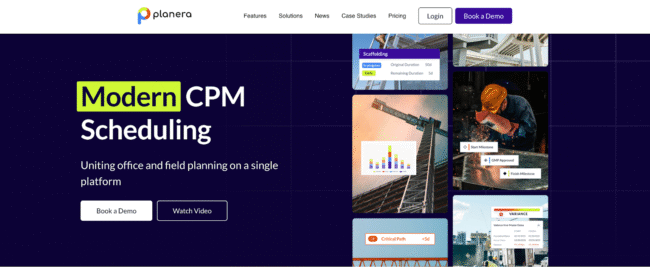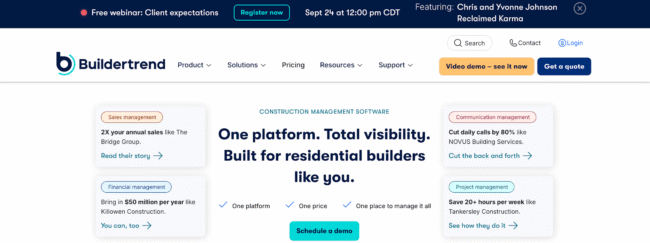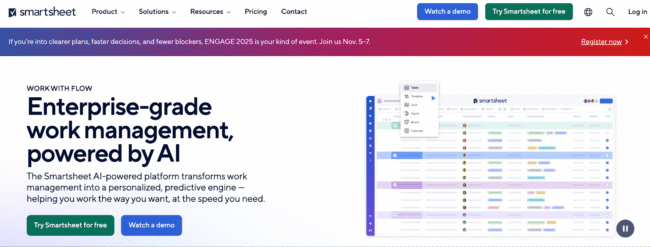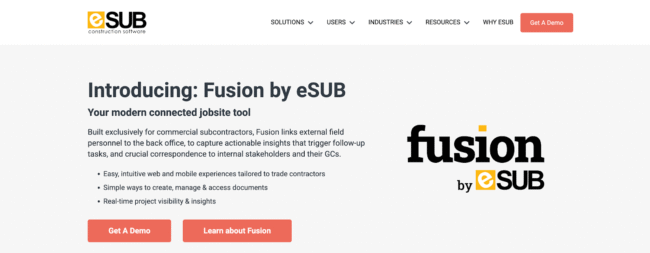
Managing construction projects has always been a balancing act—tight budgets, shifting timelines, and coordinating multiple subcontractors across different job sites. To stay competitive today, builders increasingly rely on construction planning and scheduling tools that help streamline operations, reduce delays, and improve collaboration. These digital solutions go beyond simple task lists by offering advanced features like automated updates, real-time reporting, and seamless integrations with project management and financial systems.
With so many platforms available, finding the right one depends on your project scale, budget, and team requirements. Below are some of the most trusted and widely used scheduling tools designed specifically for builders and contractors.
Why Construction Scheduling Tools Matter
In today’s fast-moving construction industry, traditional paper schedules and spreadsheets are no longer enough. Modern tools allow contractors to maintain real-time visibility into progress, prevent costly delays, and improve communication across all stakeholders. They make it easier to allocate labor and resources efficiently and ensure that every phase of a project runs according to plan. Ultimately, scheduling platforms do far more than manage timelines—they shape the overall success of a project from start to finish.
Key Features to Look For in Scheduling Software
Not every platform is the same, but the most effective scheduling solutions share common strengths. Visual Gantt charts provide clarity on timelines, milestones, and dependencies. Critical path analysis highlights the activities that must remain on track to avoid delays. Real-time collaboration tools ensure subcontractors, supervisors, and project managers are always aligned. Cloud-based access keeps information available from any location, which is especially valuable for field teams. Finally, strong integration capabilities link schedules to budgeting, reporting, and compliance systems, creating a single hub for project management.
All-in-One Project Management Platforms
Planera
Planera is a purpose-built scheduling solution designed exclusively for the construction industry. It offers cloud-based features with advanced Gantt charts, resource allocation, and critical path analysis. Its focus on visual clarity and automation makes it especially useful for contractors managing multiple teams and complex project dependencies.
One of Planera’s standout features is its advanced Gantt chart capabilities. These aren’t just static visual timelines; they are interactive, allowing project managers to drag, drop, and adjust tasks with ease. Dependencies and critical paths update instantly, giving teams an accurate picture of how even small changes can affect overall project timelines. Contractors often appreciate the simplicity of making real-time adjustments without wading through complex menus or spreadsheets.

| Key Features | Benefits |
| Advanced Gantt chart visualization | Provides clear project timelines and dependencies |
| Critical path analysis | Helps identify high-priority tasks to avoid delays |
| Real-time collaboration | Keeps contractors, subcontractors, and teams aligned |
| Automated progress updates | Saves time and ensures schedule accuracy |
Best Suited For: Contractors handling multi-phase projects that require robust visualization and seamless team collaboration.
Procore
Procore is a comprehensive construction management platform with powerful scheduling features. Its ability to connect schedules with budgets, safety systems, and quality control makes it a top choice for large contractors handling multiple complex projects.
Procore’s scheduling tools seamlessly integrate with popular applications like Microsoft Project and Primavera P6, meaning contractors can continue using familiar scheduling systems while benefiting from Procore’s centralized platform. This integration ensures that project schedules remain accurate and consistent across teams and departments, which is crucial for large-scale operations where miscommunication can quickly lead to setbacks.

| Key Features | Benefits |
| Integrated scheduling with budgets and safety | Connects timelines with financial and safety planning |
| Cloud-based access | Ensures teams can view and update schedules anywhere |
| Document and drawing management | Keeps all project files centralized and accessible |
| 400+ app integrations | Adapts to diverse workflows and business needs |
Best Suited For: Large contractors and enterprises running multiple, complex projects that require a centralized solution.
Buildertrend
Buildertrend is popular among residential and light commercial builders thanks to its user-friendly design and strong client communication tools. It helps streamline project updates, manage change orders, and maintain transparency with homeowners.
Buildertrend’s scheduling system provides clear visual timelines with drag-and-drop functionality, making it easy to set dependencies, track progress, and adjust timelines as needed. The platform also prioritizes client communication. Homeowners receive automated updates on project milestones and schedule changes, which fosters transparency and builds trust. This is especially valuable for contractors working on custom homes or remodels where client satisfaction is paramount.

| Key Features | Benefits |
| Drag-and-drop scheduling tools | Makes project planning intuitive and simple |
| Automated client notifications | Reduces miscommunication with homeowners |
| Centralized hub for photos & documents | Improves project tracking and accountability |
| Mobile access | Keeps contractors updated from the field |
Best Suited For: Residential builders, remodelers, and small contractors who value client communication and ease of use.
Smartsheet
Smartsheet blends the familiarity of spreadsheets with modern project management. Its flexibility makes it ideal for contractors transitioning from manual spreadsheets to digital scheduling systems, while still offering powerful automation and integration features.
Smartsheet’s cloud-based accessibility and integration with other business applications make it easy to manage schedules, resources, and budgets while keeping stakeholders informed. By providing a centralized hub for planning and monitoring, Smartsheet helps contractors streamline operations, reduce delays, and improve overall project efficiency.

| Key Features | Benefits |
| Spreadsheet-style interface | Eases adoption for teams familiar with Excel |
| Construction-specific templates | Provides ready-to-use scheduling structures |
| Automation for reminders and updates | Saves time and reduces manual follow-ups |
| Integrations with Microsoft, Google, Slack | Fits seamlessly into existing workflows |
Smartsheet is well suited for medium-sized construction teams looking for flexibility and the ability to integrate with other software while maintaining advanced project tracking capabilities.
eSUB Construction Software
eSUB is built with subcontractors in mind, offering straightforward scheduling tools that integrate with daily reports and resource tracking. It centralizes communication and ensures field workers and office staff stay aligned.
With features like mobile access, document control, and workflow automation, eSUB ensures that communication between the office and field is seamless and accurate. By centralizing project information, eSUB Construction Software reduces delays, improves accountability, and allows construction teams to make informed decisions that keep projects on schedule and within budget.

| Key Features | Benefits |
| Centralized scheduling | Keeps all subcontractor tasks organized |
| Real-time updates from the field | Ensures accurate, on-the-spot progress tracking |
| Daily reports & productivity tracking | Improves resource planning and accountability |
| Cloud-based access | Enhances collaboration and documentation |
eSUB Construction Software is ideal for subcontractors and contractors who need real-time visibility into field operations and seamless communication between job sites and office teams, ensuring projects stay on schedule and organized.
Future Trends in Construction Scheduling
The construction technology landscape is evolving rapidly, and scheduling tools are at the center of this change. Artificial intelligence is beginning to automate repetitive tasks such as timeline adjustments and risk forecasting. Predictive analytics are being used to anticipate bottlenecks before they occur. Mobile-first design ensures that field workers remain fully connected without relying on office-based updates. As these innovations continue, the role of scheduling software will expand from a project-tracking tool into a proactive decision-making system that drives overall efficiency and profitability.
How to Choose the Right Tool for Your Business
Selecting the right platform comes down to aligning software capabilities with your company’s size, budget, and project complexity. Smaller firms and subcontractors may prefer intuitive platforms like Buildertrend or eSUB, while larger contractors benefit from the depth and scalability of Procore or Planera. Smartsheet works well for teams that want flexibility and familiarity during the transition from manual spreadsheets. The right choice depends not only on current needs but also on how you expect your business to grow.
Final Thoughts
Construction projects today demand greater precision, speed, and collaboration than ever before. The right construction planning and scheduling tools allow builders to prevent costly mistakes, maintain control over complex projects, and strengthen relationships with clients and subcontractors. Whether your focus is residential, commercial, or specialized contracting, the platforms highlighted above provide a range of solutions to suit different requirements. By carefully evaluating their features and benefits, contractors can select the tool that transforms scheduling from a constant challenge into a competitive advantage.
